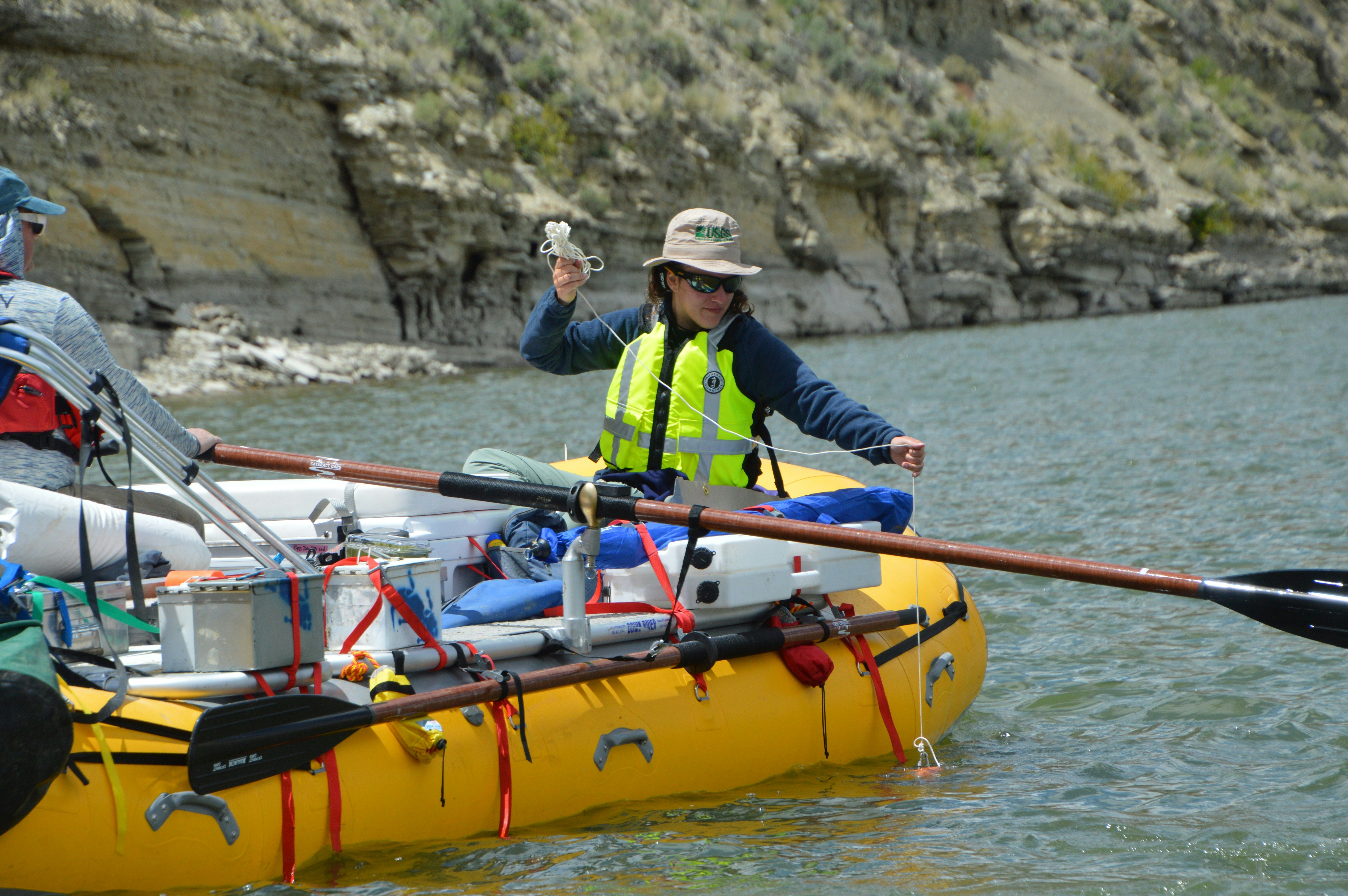Best State Student Loans and Nonprofit Lenders for December 2026?
When thinking about the primary source of education funding, most college students in the United States think of federal financial aid. However, not everyone can qualify for big sums or all types of federal support. Luckily, there are several other sources of student financial assistance, and one good alternative is state student loans.
For this guide, my team and I present important details about state-run and nonprofit student loan programs so you can determine if this is a source of financial support worth looking into. We also include a list of state student loan providers, eligibility requirements, and other essential details to help you get started on the right path to finding the best funding for your education.
Key Things You Should Know About State Student Loans and Nonprofit Lenders for 2026
- Lower Interest Rates and Favorable Terms. State student loans often have lower interest rates and more favorable repayment terms than private loans. This can make them a more affordable option for many students, reducing their financial burden after graduation.
- Nonprofit Lenders’ Mission-Driven Approach. Nonprofit lenders prioritize helping students over generating profits. Their mission-driven approach often results in better customer service, more flexible repayment options, and additional support services for borrowers.
- Eligibility and Application Process. Eligibility for state student loans can vary by state, typically requiring residency and attendance at an in-state institution. The application process is generally straightforward, with specific documentation needed to demonstrate financial need and academic progress.
Table of Contents
- Best State Student Loans and Nonprofit Lenders for 2026
- What are state student loans?
- Who is eligible for state student loans?
- How do state student loans compare to federal student loans?
- How do state student loans impact my credit score?
- How do state-specific student loan interest rates compare to federal rates?
- How can I apply for state student loans?
- What are the repayment terms for state student loans?
- Are there loan forgiveness programs for state student loans?
- Can I have both state and federal student loans?
- Can state student loans support nontraditional and accelerated degree options?
- Will upcoming policy changes affect state student loan options?
- How can state student loans complement alternative education financing models?
- Can I get personalized advice for my state student loan situation?
- How do state student loans compare to private bank loans?
- How can state student loans serve students with limited or no credit history?
- Can state student loans support online education programs?
- How do state student loans address specific career paths?
- What are the potential risks of state student loans?
- Can state student loans support vocational training and trade school education?
- Are state student loans available for aviation training?
- Are state student loans compatible with the fee models of accredited online schools?
- Other Things You Should Know About State Student Loans and Nonprofit Lenders
Best State Student Loans and Nonprofit Lenders
My team and I checked which state-run and nonprofit lenders offer the best state student loans. We came up with this list using our extensive research skills and credible sources, as well as my several years of experience as an academic adviser and career counselor. While we do our best to provide the most up-to-date loan information, it is best to verify details directly with the lenders.
1. RISLA
The Rhode Island Student Loan Authority (RISLA) is a nonprofit lender that offers affordable state-based education loans and refinancing. Aside from its low-cost and flexible student loans, what makes RISLA stand out is it accepts loan applications from residents in all the states. RISLA also provides free financial aid assistance and admissions through the College Planning Center of Rhode Island, and it provides financial literacy at colleges and high schools throughout the state.
- Fixed APR: Starting at 4.05%
- Variable APR: n/a
- Available Term Lengths: 10 and 15 years
- Minimum Credit Score: Undisclosed
- Qualifications:
- Enrolled in a Title IV public or nonprofit degree-granting institution
- Must be a U.S. citizen or a permanent resident with a non-conditional green card
- Must be 18 years old by the end of December
2. Advantage Education Loans
Advantage Education Loans is a nonprofit lender owned and managed by the Kentucky Higher Education Student Loan Corporation (KHESLC). Advantage offers loans from $1,000 up to 100% of school-certified costs for undergraduates, graduate students, and those in professional degree programs. This lender has low interest rates, simple repayment terms, and a cosigner release after 12 months of on-time repayments. However, Advantage does not accept loan applicants from some states, including Alaska, New Jersey, Maine, and Washington.
- Fixed APR: Starting at 5.29%
- Variable APR: n/a
- Available Term Lengths: 10 and 15 years
- Minimum Credit Score: Undisclosed
- Qualifications:
- Attend a school authorized to receive federal aid
- Those without a credit history may need a cosigner
- Must have no evidence of past fraud and previous loans that were discharged due to disability
3. ISL Education Lending
Iowa Student Loan Liquidity Corporation does business as ISL Education Lending. This nonprofit lender offers a unique no-cosigner loan for full-time students enrolled in an Iowa or Illinois college and provides student loans to borrowers nationwide except Maine residents. You can choose from three payment options: immediate, interest-only, and deferred. ISL Education Lending also offers a family loan that allows parents and other family members to borrow on behalf of a student.
- Fixed APR: Starting at 3.60%
- Variable APR: n/a
- Available Term Lengths: 10 and 15 years
- Minimum Credit Score: 660
- Qualifications:
- Did not default on any private or government loan and must not have an active bankruptcy case
- Accepted, enrolled, or attending an eligible, accredited university on at least a half-time basis (nonprofit schools of nursing in Iowa must be approved by the Iowa Board of Nursing)
- Continuous employment over the last two years (if applicable)
4. EDvestinU
EdvestinU is a nonprofit direct lender that is a subsidiary of Granite Edvance, formerly the New Hampshire Higher Education Assistance Foundation Network. It is a great option for students in New Hampshire, but loans are also available to those in 19 other states. You can borrow for tuition and any other qualified education expenses included in the cost of attendance (COA) less any other aid. EdvestinU offers cosigner release and provides free loan consultations. Interested borrowers will undergo a three-minute pre-qualification process that will not affect their credit score.
- Fixed APR: Starting at 6%
- Variable APR: Starting at 8.15%
- Available Term Lengths: Seven, 10, or 15 years
- Minimum Credit Score: 750
- Qualifications:
- At least 17 years old residing in an eligible state
- Has private or federal student loans at a Title IV degree-granting institution
- For international and DACA borrowers, you need a co-signer who is a U.S. resident or citizen
5. MEFA®
The Massachusetts Educational Financing Authority (MEFA) was established in 1982 to offer fixed-rate college financing to families of aspiring college students. Aside from affordable student loans, MEFA also provides tax-advantaged saving plans, education programs, and expert guidance on saving, planning, and paying for college. Its undergraduate loans offer five repayment options, while its graduate loans have two repayment options. Students from across the country can borrow from MEFA if they are studying at an eligible nonprofit college or university in the United States.
- Fixed APR: Starting at 5.75%
- Variable APR: n/a
- Available Term Lengths: 10 or 15 years
- Minimum Credit Score: 670
- Qualifications:
- Enrolled at least half-time in an accredited degree-granting program
- Undergraduates may need a co-borrower
- No history of bankruptcy or foreclosure in the last five years
Here’s What Students Say About State Student Loans
- "Taking out state student loans was a game-changer for me. The lower interest rates and flexible repayment options allowed me to focus on my studies without the constant stress of mounting debt. I'm so grateful for this opportunity to invest in my future!" — Jan
- "State student loans provided me with the financial support I needed to complete my degree. The application process was straightforward, and the terms were much more favorable compared to private loans. It gave me peace of mind knowing I could manage my repayments after graduation." — Stanley
- "As a first-generation college student, state student loans made higher education accessible for me. The lower costs and transparent conditions allowed me to graduate without feeling overwhelmed by debt. It truly felt like a supportive and empowering experience." — Meredith
What are state student loans?
State student loans are financial aid programs individual states offer to help residents pay for higher education. Here are some interesting points about these types of loans:
- State government agencies or nonprofits run state student loan programs.
- They usually have benefits and requirements similar to those of federal student loans.
- The state agencies and nonprofit groups that run programs for state student loans tend to be more mission-oriented and strive to offer support that benefits the community.
- Eligibility criteria usually include state residency and enrollment in an in-state college or university.
- State student loans can cover tuition, fees, and other educational expenses, providing a crucial financial resource for students who may not qualify for enough federal aid or need additional support.
Financial aid statistics published in 2024 by the Education Data Initiative reveal that states award financial aid amounting to $14.2 billion to 33.2% of the national student population. These figures represent how impactful state-sponsored assistance is in helping students cover education expenses.

Who is eligible for state student loans?
Eligibility for state student loans varies depending on the specific state program, but generally includes the following criteria:
- Residency. Applicants must be residents of the state offering the loan and submit proof of residency. Some state lenders may offer loans to out-of-state students attending colleges within the state, while others accept borrowers who reside and study across the United States.
- Enrollment. Students must be enrolled at least half-time in an accredited college or university within the state. Some programs may also consider out-of-state institutions if they have agreements with them.
- Academic Requirements. Maintaining satisfactory academic progress is usually necessary to qualify for and retain state student loans.
- Financial Need. While some state student loans are need-based, others may be available regardless of financial need. Applicants may need to complete financial aid forms to demonstrate their financial situation.
- Citizenship. Typically, applicants must be U.S. citizens or permanent residents.
These are just the general criteria for qualifying for a state student loan. Some states may have special considerations for certain groups of students.
For example, there are state agencies that offer financial aid programs for former foster care youth. Some lenders are particular about a borrower’s credit score and history, while others may approve loans even if you have poor or no credit.
How do state student loans compare to federal student loans?
State student loans and federal student loans differ in several key ways:
- Interest Rates and Terms. Federal student loans typically offer fixed interest rates set by Congress and may include benefits like income-driven repayment plans and forgiveness programs. State student loans may offer competitive interest rates and favorable terms, but these can vary by state and specific loan program.
- Application Process. Federal student loans are available to most students who complete the Free Application for Federal Student Aid (FAFSA). Applications for state loans are usually submitted directly to the state program.
- Loan Limits and Availability. Federal student loans have annual and aggregate limits on how much you can borrow. State student loans might offer additional funding opportunities, especially for students who have exhausted federal loan limits or need extra financial support for in-state education.
It should also be noted that even if it is a state agency or nonprofit that provides a state student loan, this type of debt is considered a private loan. Furthermore, most state-run lenders will consider borrowers who have first applied for FAFSA financial aid before state student loans.
These reasons could explain why the number of state student loan borrowers is still much lower than that of federal loan borrowers. The CollegeBoard report on student aid trends shows that nonfederal loans, which cover state and private loans, comprised only 15% of loans taken out by borrowers in 2022-2023. The chart below provides more details.
How do state student loans impact my credit score?
State student loans, like other types of loans, can significantly impact your credit score in several ways:
- Temporary Dip in Credit Score. You can expect a slight, temporary dip in your credit score when lenders conduct a hard credit check during the application process.
- Positive Impact Through On-Time Payments. Consistently making on-time payments on your state student loans can help build and improve your credit score over time. Payment history is the most significant factor in your credit score, so regular payments can boost your creditworthiness.
- Negative Impact from Late Payments. Your credit score can suffer if you miss payments or default on your state student loans. Late payments can be reported to credit bureaus, leading to a lower credit score. This can affect your ability to obtain future credit.
- Credit Mix. Having student loans as part of your credit portfolio can positively affect your credit score by diversifying your credit mix, which is a smaller but still important factor in credit scoring models.
- Debt-to-Income (DTI) Ratio. While state student loans add to your overall debt, they can impact your debt-to-income ratio. The DTI ratio is considered by lenders when you apply for additional credit. A high ratio might make it harder to get approved for new credit or result in higher interest rates.
- Long-Term Credit History. Successfully paying off your state student loans over time contributes to a positive long-term credit history, which is beneficial for your credit score.
Overall, responsibly managing state student loans by making timely payments and understanding their impact on your debt load can positively influence your credit score. Conversely, missed payments can have a detrimental effect, so carefully plan how to stay on top of repayment.
How do state-specific student loan interest rates compare to federal rates?
State-specific student loan interest rates can vary significantly compared to federal rates.
- Generally Competitive Rates. State student loan interest rates are often competitive with federal loan rates, sometimes even lower. These rates are designed to make education more accessible and affordable for state residents.
- Fixed vs. Variable Rates. While federal student loans typically have fixed interest rates set by Congress, state loans may offer both fixed and variable rates. Fixed rates provide stability, whereas variable rates can fluctuate over time based on market conditions.
- Varies by State and Program. The exact interest rates for state student loans can differ widely depending on the state and specific loan program. Some state lenders may also offer special low rates to in-state residents.
- Federal Subsidized Loans. Federal Direct Subsidized Loans have an advantage as the government pays the interest while the student is in school and during the grace period and deferment periods. State loans typically do not offer these benefits.
- Rate Caps and Adjustments. Some state loan programs may have interest rate caps or periodic adjustments, which can affect the overall cost of borrowing. Always review the terms and conditions for specific details.
The fixed interest rates for 2024-2025 federal student loans posted on the official Federal Student Aid government website are as follows:
- Direct Subsidized and Unsubsidized Loans for Undergraduate Students - 6.53%
- Direct Unsubsidized Loans for Graduate and Professional Students - 8.08%
- Direct PLUS Loans - 9.08%
As for state and private loan interest rates, estimates from the Education Data Initiative provide an average range of 4.5% to 16.99%. While state student loans can sometimes offer lower rates, they often fall within a range that can be higher than federal loans, especially for certain states with less favorable terms.
Make sure you know the current interest rate so you have a realistic estimate of how much you will be expected to pay. This can help you better assess if you will be financially capable of making repayments on time and avoid defaulting. According to student loan statistics, 10.8% of student borrowers default on their educational loans within the first year of repayment. Furthermore, 25% default within the first five years of repayment.
How can I apply for state student loans?
Applying for state student loans generally involves the following steps:
- Research Eligibility and Programs. Check your state's higher education agency website to understand the specific eligibility requirements and available loan programs.
- Complete the FAFSA. Filling out the FAFSA form is an important step when applying to and planning for college. Some states require you to submit the FAFSA to determine your eligibility for state loans and assess your financial need.
- Submit a State-Specific Application. Many states have their own application process for state student loans. This can usually be found on the state's higher education agency website.
- Provide Required Documentation. Gather necessary documents such as proof of residency, enrollment verification, financial information, and academic records. These documents are required to demonstrate your financial need and academic progress.
- Meet Deadlines. Ensure you submit all applications and documents by the specified deadlines. State loan programs often have strict application periods.
- Review and Accept Loan Offers. Once your application is processed, review the loan offers you receive and accept the terms that best fit your needs.
Remember that each state has different eligibility requirements and application processes. I recommend checking your state's higher education office for detailed instructions and deadlines.
What are the repayment terms for state student loans?
Repayment terms for state student loans can vary, but generally include the following features:
- Standard Repayment Plans. Borrowers typically have a standard repayment period of 10 to 15 years, with fixed monthly payments.
- Income-Driven Repayment Options. Some state loan programs offer income-driven repayment plans, where payments are based on the borrower’s income and family size, providing more manageable payment options.
- Graduated Repayment. Payments start lower and increase over time, designed for borrowers expecting income growth.
- Repayment Start Date. Borrowers typically begin repayment after a grace period, which often lasts six months after graduation, dropping below half-time enrollment, or withdrawing from school.
- Deferment and Forbearance. Borrowers may qualify for deferment or forbearance, allowing them to temporarily pause or reduce payments during financial hardship, further education, or other qualifying situations.
- Prepayment Flexibility. Many state student loans allow for prepayment without penalties, enabling borrowers to pay off their loans faster and save on interest.
What is the best repayment term?
While the answer depends on individual circumstances, recent trends indicate that 43% of borrowers opt for the 10-year or less fixed payment plan. This is based on published statistics from the Education Data Initiative.
According to the same report, the average time it takes to pay off student loans is 20 years. The data also shows that some professional graduates take over 45 years to repay student debts.

Are there loan forgiveness programs for state student loans?
All states and the District of Columbia offer at least one student loan forgiveness program. These programs are often designed to attract professionals in high-demand fields such as healthcare, education, and law.
Key Features of State Loan Forgiveness Programs
- Eligibility Criteria. Typically, borrowers must be U.S. citizens or residents of the state, have outstanding educational debt, live and work in the region, are employed in in-demand professions, and have made a specified number of monthly repayments toward their loan.
- Types of Professions Covered. Many programs focus on healthcare professionals, teachers, and other public service roles, providing forgiveness in exchange for a commitment to work in high-need areas.
- Amount Rewarded. Some state loan forgiveness programs provide a specified amount per year for a certain number of years and others award hundreds of thousands of dollars as long as the amount is matched by funds from a public or private source.
Here are some examples of state loan forgiveness programs:
- Colorado Educator Loan Forgiveness. Awards up to $5,000 for five years to licensed teachers or special service providers working in approved rural or content-shortage areas in the state.
- Hawaii Loan Repayment for Health Care Professionals. This loan repayment program appropriates up to $150,000 from state funds to marriage and family therapists, nurses, nurse practitioners, physicians, physician assistants, psychologists, and social workers who agree to work in underserved or federally designated heat professional shortage areas in Hawaii.
- Utah Talent Development and Retention Strategy. Those who work in a qualifying job as determined by the Governor’s Office of Economic Development, such as tech professions, may be eligible to apply for this incentive loan program.
- Texas Repayment Assistance Program for Peace Officers. Eligible recipients are full-time peace officers in the state who agree to work in the region for a specified period. The program provides an assistance cap of $20,000 per individual for a maximum of five years.
- Rhode Island Internship Reward Program. This is offered through RISLA and offers $2,000 in student loan forgiveness program on a non-federal RISLA loan after the borrower has completed one three-credit or three one-credit internships.
These programs can significantly reduce the financial burden of student loans for eligible borrowers. This is especially helpful when more families and students are struggling to keep up with paying off educational debts.
According to the CollegeBoard 2023 report on the trends in college student aid, only 1% of federal loan borrowers were in active repayment status as of the second quarter of FY2023.
Can I have both state and federal student loans?
You can have both state and federal student loans. Many students use a combination of both to cover their educational expenses. Here is how it works:
- You usually have to apply for federal aid first by completing the FAFSA.
- After maximizing federal scholarships, grants, and loan options, students can apply for state student loans to cover any remaining costs.
- Ensure you meet the eligibility criteria for both federal and state loans, which may include residency requirements for state loans and enrollment in an accredited institution for both.
- When borrowing from multiple sources, you need to keep track of different repayment schedules, interest rates, and terms so you can effectively manage your debt after graduation.
By combining federal and state student loans, students can access the financial resources needed to pursue their education while potentially benefiting from the unique advantages each type of loan offers.
To minimize the out-of-pocket expense, the federal and state governments also offer scholarships and grants aside from loans. I highly recommend that students and families prioritize applying for these forms of financial aid during the college preparation process and only turn to loans if scholarships, grants, and education savings cannot cover the total cost of attendance.
The 2024 Education Data Initiative report on financial aid statistics suggests that state and local grants are most likely awarded to public university students. Students at private schools are also awarded state assistance, but the number of recipients is fewer than those in public institutions. The chart below provides more details.
Can state student loans support nontraditional and accelerated degree options?
State student loans are increasingly accommodating alternative education models by extending financial support to online, accelerated, and competency-based programs. These flexible pathways enable students to achieve their academic and career goals more rapidly while still accessing state-backed funding. Some programs now consider modern degree formats that help reduce educational expenses and expedite entry into the workforce, aligning with current labor market demands. Moreover, such funding options are structured to maintain underwriting standards without limiting access for students exploring degrees you can get online. Evaluating the tailored eligibility criteria and repayment plans for these programs is essential to ensure they complement nontraditional learning strategies and promote sustainable career development.
Will upcoming policy changes affect state student loan options?
Recent legislative and regulatory developments may reshape state student loan programs, potentially altering eligibility, interest rate structures, and repayment options. Borrowers should monitor state higher education offices and financial aid portals for announcements regarding policy adjustments. These changes can also influence the availability of funding for nontraditional learning paths, including programs like a graduate certificate online. It is essential to verify updates with official sources to ensure that your financial strategy remains aligned with the current regulatory framework.
How can state student loans complement alternative education financing models?
State student loans can be strategically integrated with alternative financing options to build a robust educational funding plan. Borrowers exploring diverse learning paths, such as combining loans with online certificate programs that pay well, may benefit from reduced overall debt exposure while accessing career-oriented skills training. This approach provides a balanced framework by aligning state-backed financial assistance with nontraditional education models that emphasize skill acquisition and rapid entry into high-demand job sectors.
Can I get personalized advice for my state student loan situation?
You can get personalized advice for your state student loan situation through various resources:
- State Higher Education Agencies. Many states have higher education agencies or financial aid offices that offer personalized guidance on state student loans. You can contact them directly for detailed information and advice specific to your state’s programs.
- College Financial Aid Offices. The financial aid office at your college or university can provide tailored advice based on your specific situation. They can help you understand your options, apply for loans any available forgiveness programs, and manage your repayment.
- Nonprofit Organizations. Organizations like The Institute of Student Loan Advisors (TISLA) and the National Foundation for Credit Counseling (NFCC) offer free or low-cost counseling services to help you navigate student loan options and develop a repayment strategy.
- Loan Servicers. Contact your state student loan servicer for specific information about your loan, including repayment options, deferment, forbearance, and forgiveness programs. They can provide personalized advice based on your loan details.
- Certified Financial Counselors. Seeking guidance from certified financial counselors who specialize in student loans can help you create a personalized repayment plan based on your financial situation.
- Online Resources and Tools. Websites like the Consumer Financial Protection Bureau (CFPB) and Federal Student Aid (FSA) offer tools and resources to help you understand and manage your student loans.
These resources can help you navigate your options and develop a strategy that fits your needs.
How do state student loans compare to private bank loans?
State student loans, administered by state agencies and nonprofits, typically offer more flexible eligibility criteria and repayment structures than their private counterparts. They often feature competitive interest rates designed to meet public policy objectives rather than profit margins. In contrast, private options—such as those provided by banks that offer student loans—may impose stricter credit requirements, higher interest rates, and less flexible repayment terms. Evaluating both alternatives allows borrowers to align their long-term financial planning with solutions that offer transparent terms and potential credit-building opportunities.
How can state student loans serve students with limited or no credit history?
For borrowers with limited or no credit history, state student loans can often provide a viable path to funding higher education. While some lenders may require a cosigner or a specific credit score, several state-based programs are designed to be more inclusive. These loans frequently offer competitive rates and flexible terms that can help students establish credit responsibly over time.
Moreover, if you’re looking for a private alternative, you might explore the option of a student loan no credit check from select private lenders. These loans are tailored to help students secure funding despite not meeting traditional credit requirements. By comparing the terms and benefits between state loans and private options, students can identify the best solution to their financial situation.
Understanding your loan options and the specific terms of eligibility ensures you’re making the most informed decision as you finance your education. Always review all resources available, including state loans, federal aid, grants, scholarships, and private loan alternatives.
Can state student loans support online education programs?
State student loans are increasingly evolving to support diverse learning environments, including fully digital programs. Many state-backed initiatives now recognize that online education can be a cost-effective and flexible alternative to traditional campus-based instruction. These loans may offer tailored repayment options and underwriting criteria that accommodate the unique schedules and enrollment patterns of online learners. For instance, state loan programs are adapting to include provisions for students enrolled in online classes that take financial aid, ensuring that nontraditional students have access to financial assistance that aligns with modern educational models.
How do state student loans address specific career paths?
State student loans often cater to students pursuing specific career paths, particularly in high-demand sectors like healthcare, education, and veterinary services. By aligning their funding criteria with state workforce needs, these loans incentivize students to enter jobs that directly contribute to their communities.
For instance, some state loan programs offer enhanced borrowing limits or specialized repayment terms for students training in fields such as teaching, nursing, or veterinary medicine. Aspiring veterinarians, for example, may find state loans particularly beneficial due to the high costs associated with veterinary school. For a comprehensive breakdown of these expenses, you can explore how much does it cost to become a veterinarian. Understanding these costs can help borrowers estimate their financial requirements and assess whether state-specific loans offer viable support.
Additionally, several state-based loan forgiveness programs are tailored to professionals who commit to working in underserved areas or fields. These initiatives not only alleviate debt burdens but also help cultivate a sustainable workforce by addressing critical local needs. As such, state student loans often encompass options that extend beyond mere financial aid, fostering long-term opportunities tied to career development.
What are the potential risks of state student loans?
While state student loans provide an alternative to federal financial aid, they may involve risks that require careful evaluation. Some programs can have flexible interest calculations subject to market fluctuations and may not offer the robust borrower protections available with federal loans. Additionally, repayment plans might be less forgiving in cases of financial hardship, and subtle variances in eligibility criteria could affect long-term financial planning. Compare different options, including College Ave loans, to ensure the selected program aligns with your fiscal strategy.
Can state student loans support vocational training and trade school education?
Several state student loan programs extend funding options to vocational training and trade school education, addressing the needs of learners pursuing technical and career-focused paths. Eligibility for such loans depends on state-specific criteria and the accreditation status of the vocational institution. Borrowers should verify that their chosen trade school meets program standards to qualify for state-backed funding. For additional insights into accredited options, consider reviewing trade school programs online. This targeted support can help bridge the gap between traditional academic pathways and industry-specific skills development.
Are state student loans available for aviation training?
Several state student loan programs now include financing options designed for specialized training, including aviation programs. Some state initiatives recognize the importance of developing a skilled aviation workforce and, as such, offer tailored support through competitive interest rates, flexible repayment options, and specific underwriting standards that align with flight school accreditation. Borrowers should verify their eligibility with both local state education agencies and the accredited aviation institution to ensure access to these specialized terms. For additional insights on financing aviation education, refer to our guide on student loan for aviation school.
Are state student loans compatible with the fee models of accredited online schools?
State student loans are structured to accommodate diverse educational cost models, including those offered by accredited online institutions that may forgo traditional fees. Lenders assess the overall cost of attendance rather than isolated fees, allowing flexibility for programs that emphasize streamlined fee structures. This approach benefits borrowers by providing state-backed funding even when tuition models, such as those of online schools no application fee, differ from conventional campus-based programs. Prospective borrowers should verify program accreditation to ensure eligibility and maximize the benefits offered by state student loan initiatives.
Key Findings
- Borrowers can usually get state student loans of at least $1,000 up to 100% of school-certified costs.
- The available repayment term lengths for state student loans are typically 10 or 15 years.
- Many state-run loan providers offer lower fixed interest rates than federal loan interest rates.
- 2024 student loan statistics reveal that it takes 20 years for the average borrower to pay off their debt.
- Only 1% of federal loan borrowers were in active repayment status as of the second quarter of FY2023, according to a CollegeBoard report on trends in college student aid.
Other Things You Should Know About State Student Loans and Nonprofit Lenders
What state has the most student loans?
The state with the most student loan debt is Washington, D.C., where borrowers have an average debt of $54,856. Following D.C., Maryland ranks second with an average debt of $42,666, and Georgia comes in third with an average of $40,438. Other states with high average student loan debt include Virginia at $38,679 and Florida at $37,848.
These figures reflect the increasing burden of student loans across the country, with many states experiencing significant debt levels among graduates.
What type of loan is best for college students?
While private loans can be a helpful supplement if federal loans are insufficient, they often have higher interest rates and less favorable terms. They may require a credit check or cosigner. Federal loans are generally the most advantageous choice for college students due to their affordability, flexibility, and available benefits.
Should you refinance student loans with a state-based lender?
Refinancing student loans with a state-based lender can be beneficial, but it depends on individual circumstances. State lenders may offer competitive interest rates and favorable terms, particularly for borrowers with good credit. They often provide options that cater to specific needs, such as flexible repayment plans or borrower protections.
However, if you have federal student loans, refinancing with a private or state lender means losing access to federal benefits, such as income-driven repayment plans and loan forgiveness programs.
Before proceeding, evaluate your financial situation, compare rates from multiple lenders, and consider the long-term implications. If you can secure a lower interest rate and are comfortable giving up federal protections, refinancing with a state-based lender might be a good choice. Always ensure that the benefits outweigh the potential drawbacks.
References:
- Federal Student Aid (2024). (DL-24-03) Interest Rates for Direct Loans First Disbursed Between July 1, 2024 and June 30, 2025. https://fsapartners.ed.gov/knowledge-center/library/electronic-announcements/2024-05-14/interest-rates-direct-loans-first-disbursed-between-july-1-2024-and-june-30-2025
- Hanson, M. (August 2023). Student Loan Default Rate. Education Data Initiative. https://educationdata.org/student-loan-default-rate
- Hanson, M. (February 2024). Average Student Loan Interest Rate. Education Data Initiative. https://educationdata.org/average-student-loan-interest-rate
- Hanson, M. (May 2024). Financial Aid Statistics. Education Data Initiative. https://educationdata.org/financial-aid-statistics
- Ma, J. and Pender, M. (2023). Trends in College Pricing and Student Aid 2023. College Board. https://research.collegeboard.org/media/pdf/Trends%20Report%202023%20Updated.pdfhttps://educationdata.org/student-loan-default-rate


































